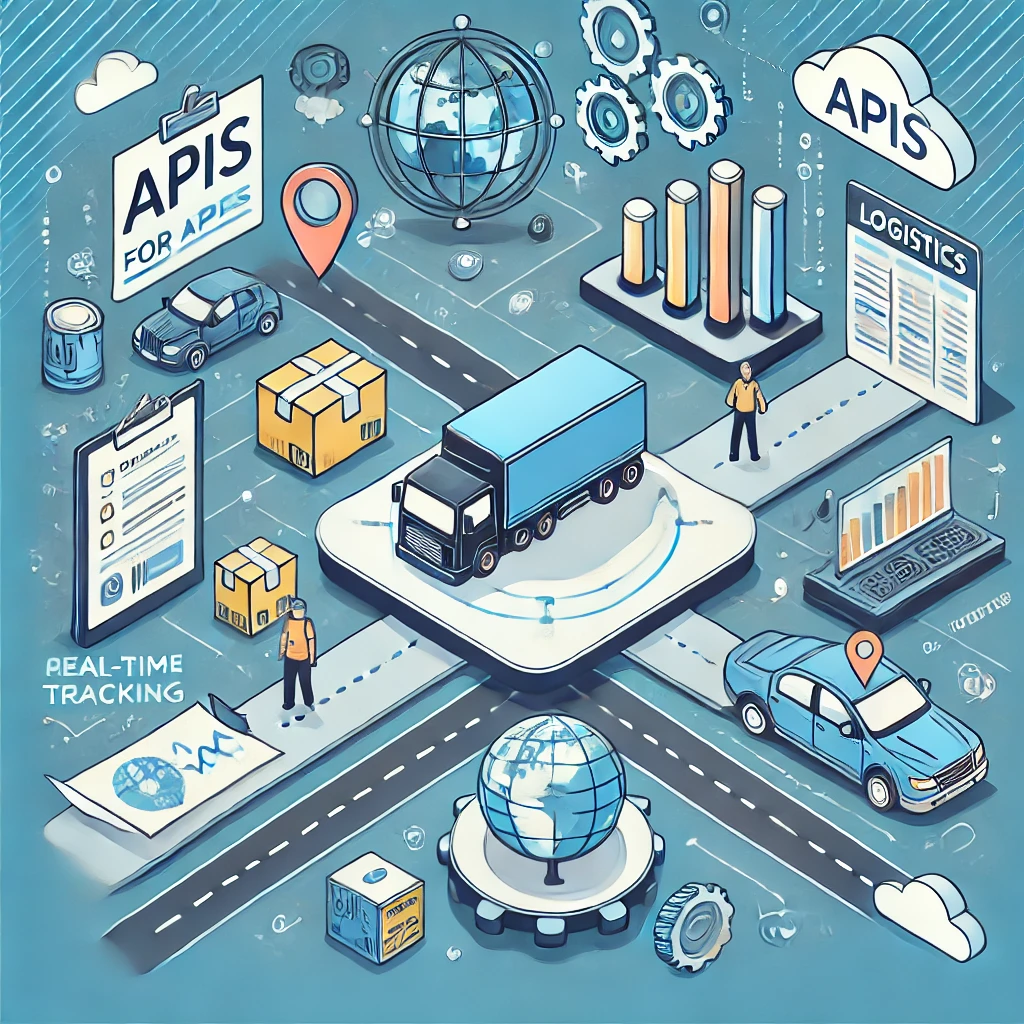Building APIs for Logistics Management with Syncloop Tools

Syncloop, a leading API development platform, provides tools specifically tailored to address the complexities of logistics management. This blog explores how Syncloop enables the creation of efficient logistics APIs, its key features, and best practices for leveraging its tools to optimize operations.
The Role of APIs in Logistics Management
Logistics APIs serve as the communication layer between different components of the supply chain. Their primary functions include:
- Real-Time Tracking: Enabling live updates on the movement of goods and vehicles.
- Route Optimization: Integrating traffic data and algorithms to calculate the most efficient paths.
- Inventory Management: Ensuring accurate stock levels and synchronizing data across systems.
- Customer Engagement: Sending automated notifications about order statuses and ETAs.
- Third-Party Integration: Connecting with external services such as payment gateways and shipping carriers.
How Syncloop Simplifies Logistics API Development
Syncloop provides a robust framework and advanced tools to streamline the development of logistics APIs:
1. Real-Time Data Synchronization
Syncloop supports WebSocket APIs and event-driven architectures, ensuring real-time updates across systems, crucial for tracking and coordination.
2. Dynamic Data Mapping
The platform allows developers to map and transform data formats dynamically, ensuring seamless interoperability with various systems.
3. Scalable Architecture
Designed for scalability, Syncloop enables APIs to handle high transaction volumes and fluctuating loads, which are common in logistics.
4. Third-Party Integrations
Syncloop simplifies connecting with external APIs, such as GPS services, shipping carriers, and payment gateways, enabling end-to-end functionality.
5. Role-Based Access Control (RBAC)
RBAC ensures that sensitive data is accessible only to authorized users, enhancing security across logistics systems.
6. Monitoring and Analytics
With built-in monitoring tools, Syncloop tracks API usage, performance, and errors, providing insights to optimize operations.
Benefits of Using Syncloop for Logistics APIs
1. Enhanced Efficiency
Syncloop automates key processes like data transformation and routing, reducing manual intervention and errors.
2. Faster Development
Prebuilt templates and workflows accelerate API development, allowing faster deployment of logistics solutions.
3. Improved Customer Experience
Real-time APIs enable timely updates and notifications, ensuring transparency and satisfaction for end-users.
4. Cost Savings
Scalable architecture and efficient integrations reduce infrastructure costs while improving operational productivity.
5. Future-Ready Solutions
Syncloop’s modular approach ensures logistics APIs can adapt to evolving business requirements and technologies.
Real-World Applications of Syncloop in Logistics
1. Fleet Management
APIs built with Syncloop facilitate vehicle tracking, fuel monitoring, and maintenance scheduling, optimizing fleet operations.
2. Warehouse Automation
Syncloop integrates with inventory systems and robotics to streamline stock management, order fulfillment, and shipping processes.
3. Last-Mile Delivery
Real-time APIs enable dynamic route optimization, delivery tracking, and customer notifications, enhancing last-mile efficiency.
4. Cross-Border Shipping
Syncloop connects with customs and international shipping APIs, ensuring smooth cross-border operations and compliance.
Best Practices for Building Logistics APIs with Syncloop
- Leverage Real-Time Workflows: Use Syncloop’s event-driven architecture for live tracking and updates.
- Standardize Data Models: Implement consistent data schemas to simplify integrations and reduce errors.
- Integrate Security Features: Use RBAC and encryption to protect sensitive data and ensure compliance.
- Optimize for Scalability: Design APIs to handle high transaction volumes during peak periods.
- Enable Caching: Cache frequently accessed data, such as inventory or route information, to enhance performance.
- Monitor Continuously: Use Syncloop’s analytics tools to track API performance and identify areas for improvement.
Conclusion
The logistics industry demands APIs that are not only robust and scalable but also adaptable to rapidly changing conditions. Syncloop equips developers with the tools to meet these demands, enabling seamless integrations, real-time operations, and enhanced customer experiences.
Whether you’re building APIs for fleet management, warehouse automation, or last-mile delivery, Syncloop provides a reliable and efficient platform to bring your logistics solutions to life. Embrace Syncloop to drive innovation and efficiency across your supply chain.
A dynamic illustration of interconnected logistics components, including fleets, warehouses, and customers, seamlessly integrated through APIs powered by Syncloop.
Back to Blogs